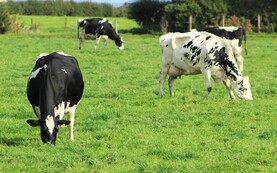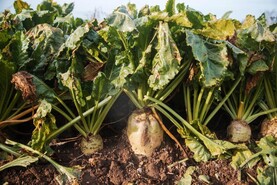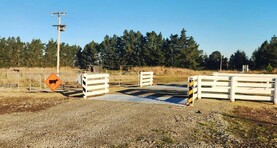Last autumn, the planned winter crop area fell short by somewhere between 10% and 20%. This was in part due to difficult sowing conditions in a tricky back end. As a result, the predicted spring cropping area this year will most likely be up on 2017.
Overall, spring seed availability appears to be higher this year than in 2017, but given the expected demand, it is entirely possible that the supply could be tighter than experienced in previous years.
The option to plant forage crops is sometimes overlooked on many cereal farms.
Machinery requirements, agronomic knowledge, market outlets, opportunity cost, land availability, potential profitability and broken agreements are just some of the factors which have prevented tillage farmers from growing forage crops in the past.
However, given the apparent fodder shortages in certain locations around the country, the increasing fodder demand from ever-growing livestock numbers and the forecasts for relatively modest profitability levels in cereals, forage crops could be a viable option for many cereal farmers this year.
Opportunity
Furthermore, given the extremely challenging harvest weather experienced last year, forage crops may present an opportunity to spread risk and workload for the coming season.
The 2018 estimated forage crop margins was recently published by Teagasc (see Table 1) and provides an insight into the expected cost of producing various forage crops.
The report includes relevant variable and machinery costs and provides an estimate of cost per tonne of dry matter (DM) utilised. The report does not factor in land price and other fixed costs.
Value of forage crops
Teagasc is keen to stress that, as well as cost per tonne of DM produced, forage crops should also be evaluated on energy (UFL), protein content and feeding system to give a more complete value of the crop. For this reason, a suggested euro value per tonne is not provided.
However, if two of the most commonly grown forage crops are examined, their expected gross margins can be evaluated.
Fodder beet: This is the most expensive of all the forage crops within the report, with total materials and machinery costs coming to €1,894/ha.

The average green yield (fresh weight of leaves and roots) stands at 124t/ha. This gives an approximate saleable crop yield of 73t/ha. According to Teagasc, at €35/t, this will deliver a gross margin of €496/ha. However, top growers can more than double this margin. Tops can also contribute additional benefit or margin.
The total utilisable dry matter tonnage of this yield is calculated at 13t. Therefore, the cost per tonne of DM utilised is €146.
Maize: The cost of growing maize is also high, with total materials and machinery costs coming to €1,643/ha. The use of plastic film at planting represents a significant cost of €260/ha.

Target yields for maize crops stand at 55t/ha and at a value of €45/t, Teagasc estimates that this will deliver a gross margin of €502/ha.
The total utilisable dry matter tonnage at target yields is calculated at 15t/ha. This means that the cost per tonne of DM utilised is €110.
Forage crops vs grass silage
Grazed grass continues to be the cheapest fodder source, costing about €47/t of DM utilised excluding a land charge.
However, first-cut grass silage costs approximately €125/t of DM utilised, while second-cut grass silage costs approximately €140/t.
The cost of whole crop wheat and maize silage is approximately €110/t DM, while kale and stubble turnips cost €116 and €123/t of DM respectively.
Therefore, based on these figures and looking at the cost of production on a DM basis only, there is greater value for money in growing these crops for fodder when compared with first- and second-cut silage. They also represent a real opportunity for better crop margins where a growers has a reliable agreement with another local farmer.
Read more
60,000 bales needed to meet northwest fodder shortage
Crop options for spring planting
Last autumn, the planned winter crop area fell short by somewhere between 10% and 20%. This was in part due to difficult sowing conditions in a tricky back end. As a result, the predicted spring cropping area this year will most likely be up on 2017.
Overall, spring seed availability appears to be higher this year than in 2017, but given the expected demand, it is entirely possible that the supply could be tighter than experienced in previous years.
The option to plant forage crops is sometimes overlooked on many cereal farms.
Machinery requirements, agronomic knowledge, market outlets, opportunity cost, land availability, potential profitability and broken agreements are just some of the factors which have prevented tillage farmers from growing forage crops in the past.
However, given the apparent fodder shortages in certain locations around the country, the increasing fodder demand from ever-growing livestock numbers and the forecasts for relatively modest profitability levels in cereals, forage crops could be a viable option for many cereal farmers this year.
Opportunity
Furthermore, given the extremely challenging harvest weather experienced last year, forage crops may present an opportunity to spread risk and workload for the coming season.
The 2018 estimated forage crop margins was recently published by Teagasc (see Table 1) and provides an insight into the expected cost of producing various forage crops.
The report includes relevant variable and machinery costs and provides an estimate of cost per tonne of dry matter (DM) utilised. The report does not factor in land price and other fixed costs.
Value of forage crops
Teagasc is keen to stress that, as well as cost per tonne of DM produced, forage crops should also be evaluated on energy (UFL), protein content and feeding system to give a more complete value of the crop. For this reason, a suggested euro value per tonne is not provided.
However, if two of the most commonly grown forage crops are examined, their expected gross margins can be evaluated.
Fodder beet: This is the most expensive of all the forage crops within the report, with total materials and machinery costs coming to €1,894/ha.

The average green yield (fresh weight of leaves and roots) stands at 124t/ha. This gives an approximate saleable crop yield of 73t/ha. According to Teagasc, at €35/t, this will deliver a gross margin of €496/ha. However, top growers can more than double this margin. Tops can also contribute additional benefit or margin.
The total utilisable dry matter tonnage of this yield is calculated at 13t. Therefore, the cost per tonne of DM utilised is €146.
Maize: The cost of growing maize is also high, with total materials and machinery costs coming to €1,643/ha. The use of plastic film at planting represents a significant cost of €260/ha.

Target yields for maize crops stand at 55t/ha and at a value of €45/t, Teagasc estimates that this will deliver a gross margin of €502/ha.
The total utilisable dry matter tonnage at target yields is calculated at 15t/ha. This means that the cost per tonne of DM utilised is €110.
Forage crops vs grass silage
Grazed grass continues to be the cheapest fodder source, costing about €47/t of DM utilised excluding a land charge.
However, first-cut grass silage costs approximately €125/t of DM utilised, while second-cut grass silage costs approximately €140/t.
The cost of whole crop wheat and maize silage is approximately €110/t DM, while kale and stubble turnips cost €116 and €123/t of DM respectively.
Therefore, based on these figures and looking at the cost of production on a DM basis only, there is greater value for money in growing these crops for fodder when compared with first- and second-cut silage. They also represent a real opportunity for better crop margins where a growers has a reliable agreement with another local farmer.
Read more
60,000 bales needed to meet northwest fodder shortage
Crop options for spring planting








 This is a subscriber-only article
This is a subscriber-only article










SHARING OPTIONS: